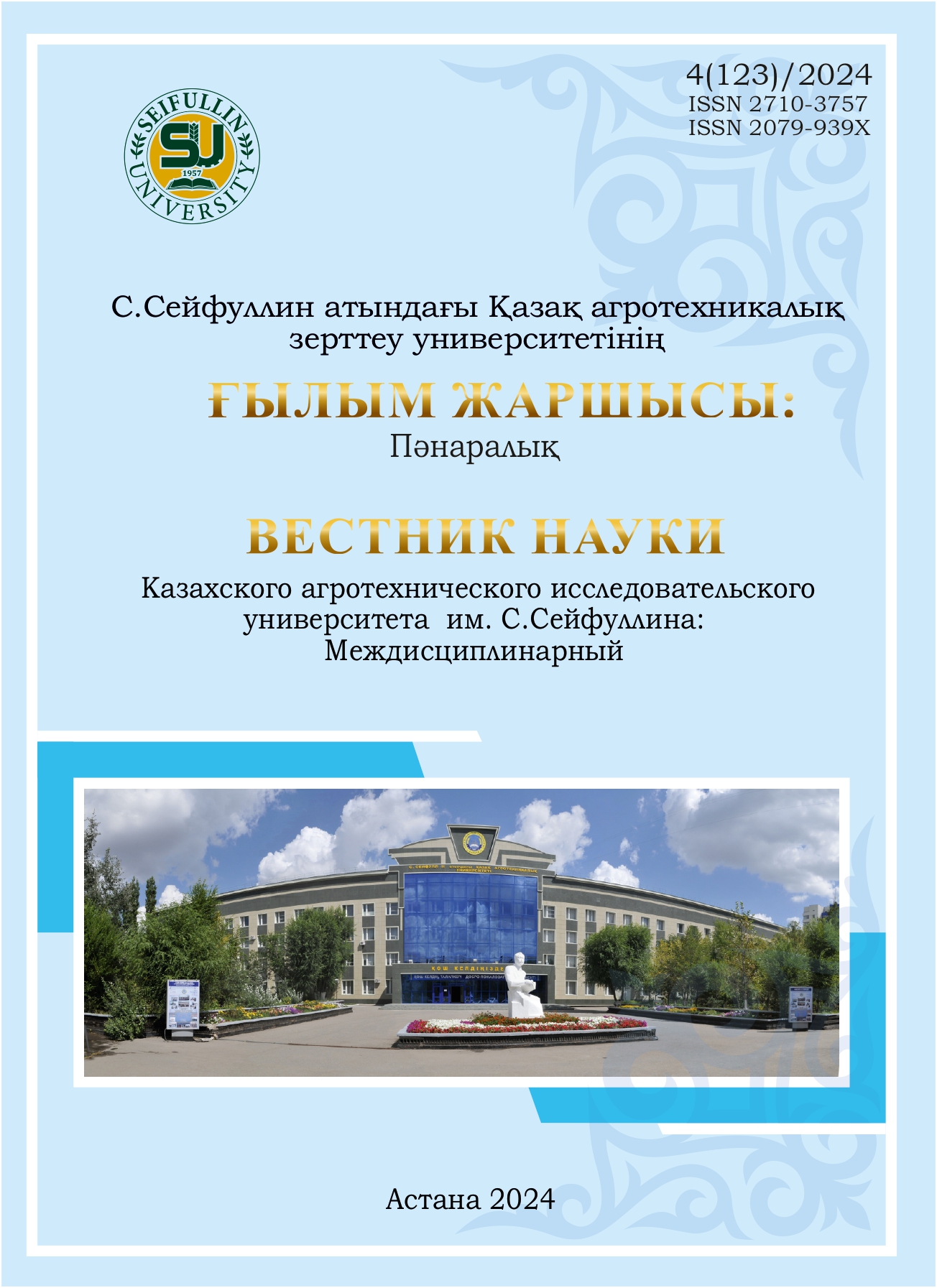Assessment of the possibilities of remote monitoring of soil moisture in the territory of northern Kazakhstan
DOI:
https://doi.org/10.51452/kazatu.2024.4(123).1788Keywords:
soil moisture; agricultural production; remote sensing; geoinformational system.Abstract
Background and Aim. Assessment of the pre-sowing moisture content in the sown soil layer is necessary for effective management of agricultural production, especially in the zone of risky farming. Northern Kazakhstan is a key region for agricultural production in the country, and given global climate change, the region's exposure to risks in agricultural production (drought, erosion, etc.), it is necessary to introduce methods for operational assessment of conditions and remote monitoring of agricultural production.
Materials and Methods. Satellite data were used to assess the moisture content in the soil and the state of vegetation. Calibration of ground data was carried out by sampling soil samples to improve the accuracy of satellite data. Soil moisture was measured using a capacitive moisture meter based on the measurement of electrical conductivity, and samples were taken in the pre-sowing period throughout the territory of Northern Kazakhstan, at the depth of the sowing layer. Calculations of reserves of productive moisture in the soil have been made, taking into account the volume and percentage of moisture content. These ground-based measurements served as reference data for the calibration of satellite indicators. The calibrated data made it possible to map the distribution of soil moisture, highlighting the spatial variability of humidity in the region.
Results. Satellite analysis using remote sensing and ground-based data revealed the features of the spatial distribution of soil moisture in the region. Calculations on seasonal fluctuations of snow cover and its low density suggest insufficient accumulation of water resources in winter, which affects the level of productive soil moisture in spring in the territory of Northern Kazakhstan.
Conclusion. The conducted research demonstrates that methods for assessing soil moisture using remote sensing data and ground measurements are an effective tool for operational monitoring of soil conditions in Northern Kazakhstan. A comprehensive analysis of spectral indices (NDVI, NDWI, NDMI) and water scarcity indices (mCDI and SWE) revealed moderate water scarcity. This deficiency requires the adaptation of agricultural practices for optimal use of available moisture. Based on the data obtained, it is recommended to introduce moisture-saving technologies, more accurate planning of sowing cycles and adaptation of agricultural technologies to current hydrometeorological conditions, which will mitigate the impact of water scarcity and improve the stability of agricultural production in the zone of risky farming.

